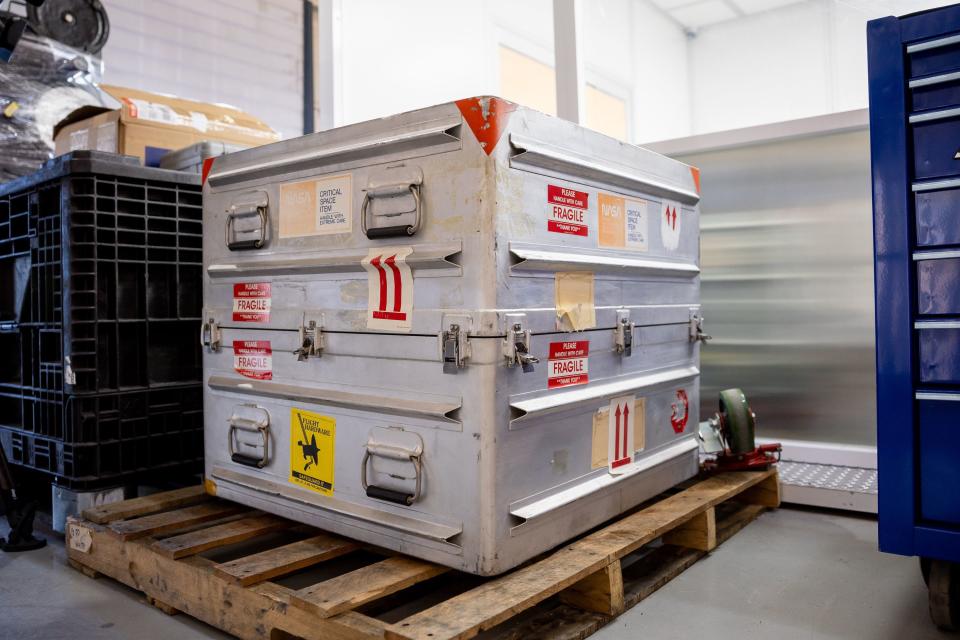NASA dropping ‘scientific time capsule’ from beginning of solar system into Utah desert
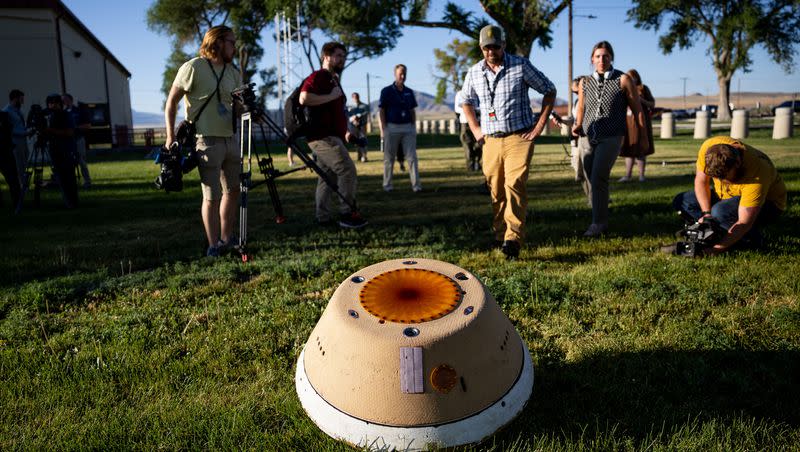
The most dangerous asteroid in the solar system is coming to Earth this fall — a piece of it, at least — as part of NASA's first U.S. mission to collect a sample from an asteroid will make its landing in the Utah desert.
OSIRIS-REx will land Sept. 24 at the Utah Test and Training Range in Dugway.
Analyzing the sample from the asteroid Bennu, estimated to be around 4.5 billion years old, will help scientists understand the origin of life in the universe.
"It's a scientific time capsule from the very beginning of our solar system," University of Arizona principal investigator Dante Lauretta said of Bennu. "It's older than the earth, and it really tells us about where we came from."
Members of the media on Thursday were invited to visit the Dugway Proving Ground, located around 85 miles west of Salt Lake City, to learn about the significance of the asteroid sample collection and the preparation that has gone into it. Experts came to the site from NASA, Lockheed Martin, University of Arizona, Utah State University and the Utah Test and Training Range.
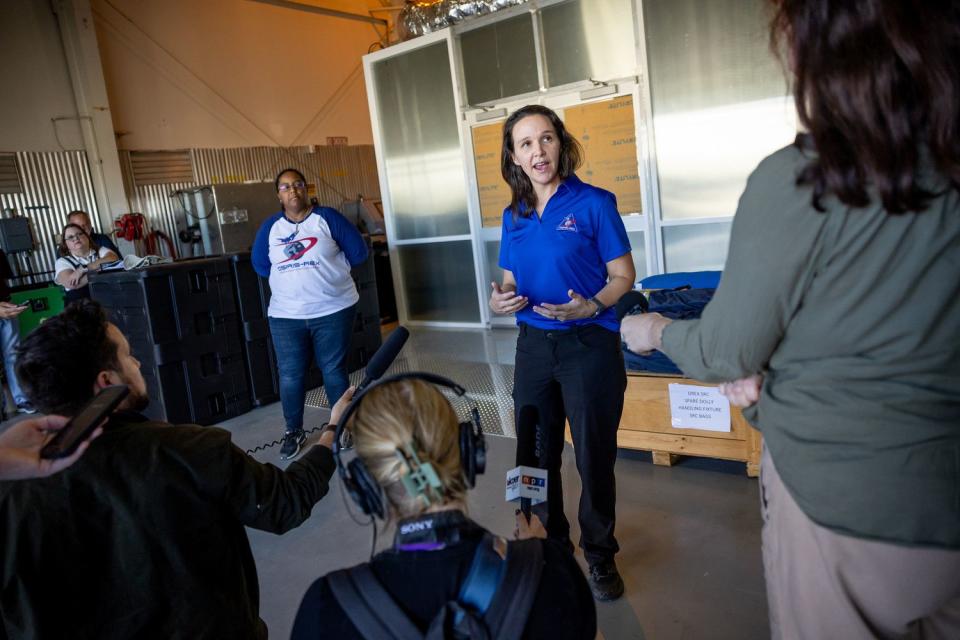
Background and preparation
OSIRIS-REx has been in the works for 20 years, with the mission aircraft in space for the past seven years. The aircraft containing the capsule used to collect the asteroid sample launched from Cape Canaveral on Sept. 8, 2016. It reached Bennu in December 2018 and left with a sample in May 2021.
The capsule is the size of a large car tire, weighs approximately 110 pounds and is covered in a cork-based thermal material to protect the sample from heat. It hinges open to collect samples "like Pac-Man's mouth," said Richard Witherspoon, ground recovery lead at Lockheed Martin.
Witherspoon said the recovery team has conducted five major rehearsals in anticipation of the landing, with the most recent one taking place at the Utah Test and Training Range. Rehearsing on-site has allowed the team to analyze ground conditions and simulate the real landing.
"There's a lot of learning how to work with our science team members to choreograph everything that we're doing, and you can only do that by actually having the real hardware there, all of the people, in the conditions," Witherspoon said.
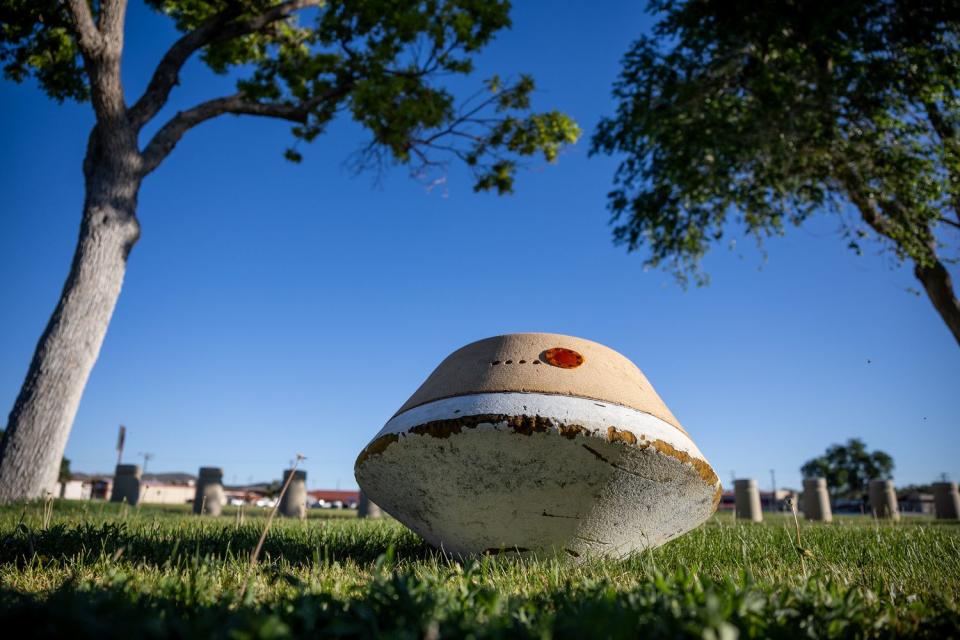
Witherspoon worries that the metal screws on the capsule may fuse together, keeping them from opening it. Weather could also impact the landing, and the parachute could also get stuck. But Witherspoon's team has rehearsed every possibility.
"Our team now feels really confident that … whatever we see the day when we get there, we already have a plan for how we're going to operate and react, and everyone has practiced that, so nothing should come as a surprise for us," he said. "We don't expect anything catastrophic to happen."
Landing day
The OSIRIS-REx aircraft will drop the capsule from space around four hours prior to the expected landing time of 8:55 a.m. on Sept. 24. The capsule will enter the earth's atmosphere in an elliptical orbit above California at around 27,700 mph, and at around 5,000 degrees Fahrenheit.
The capsule's temperature will lower to around 130 degrees by the time it lands at the Utah Test and Training Range. It is unlikely that the object's landing will disturb any surrounding communities, experts said.
The recovery team will probably use oven mitt-like thermal gloves to protect themselves against the heat, Witherspoon said. If it has cooled enough, however, they will use simple nitrile gloves. The concern is protecting the capsule from contamination, as the capsule itself poses no major threat to the team members.
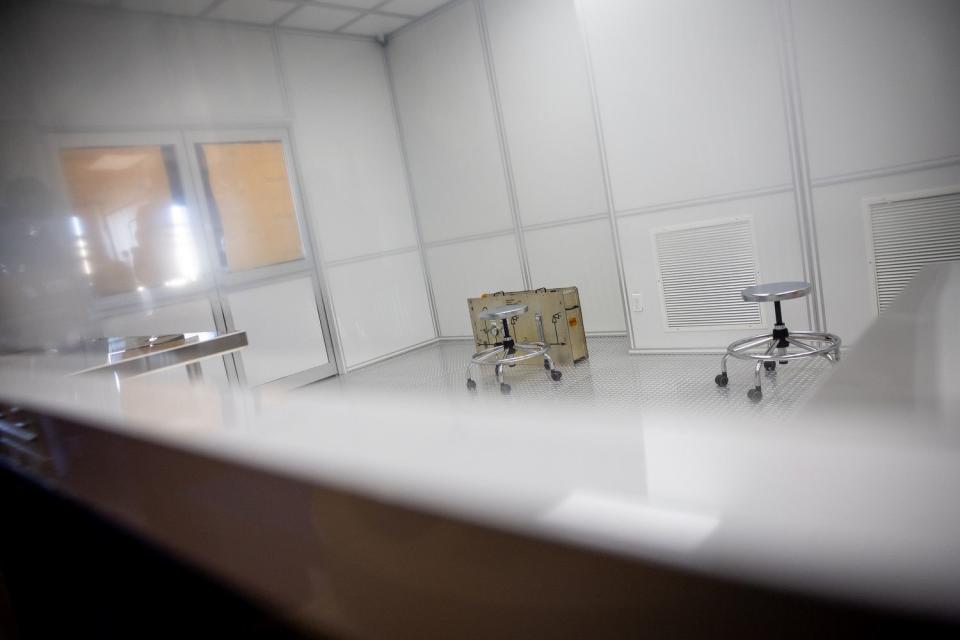
The recovery could take up to two hours, with a team of 11 people involved in collecting not only the capsule, but also nearby air and soil samples. Scientists believe they will have around 250 milligrams of regolith from Bennu, Witherspoon said, but they could have collected up to two kilograms.
The capsule will be taken to a cleanroom facility on site to minimize contamination and prepare the canister containing the sample to send to NASA's Johnson Space Center in Houston. The canister will be packaged using nitrogen purging, a method of using nitrogen to displace air and avoid potential contamination from air and humidity.
In Houston, the sample will be separated into parts to be studied and shared. Some portions will go to a vault in White Sands, New Mexico, to be preserved under the assumption that future scientists will have better technology for analyzing space samples. This is the same protocol followed with samples from NASA's moon landing missions, the first of which occurred on July 20, 1969 — exactly 54 years ago Thursday.
Other samples will also be shared with Canada in exchange for the laser altimeter it provided that helped map out Bennu, and with the Japan Aerospace Exploration Agency, among other organizations.
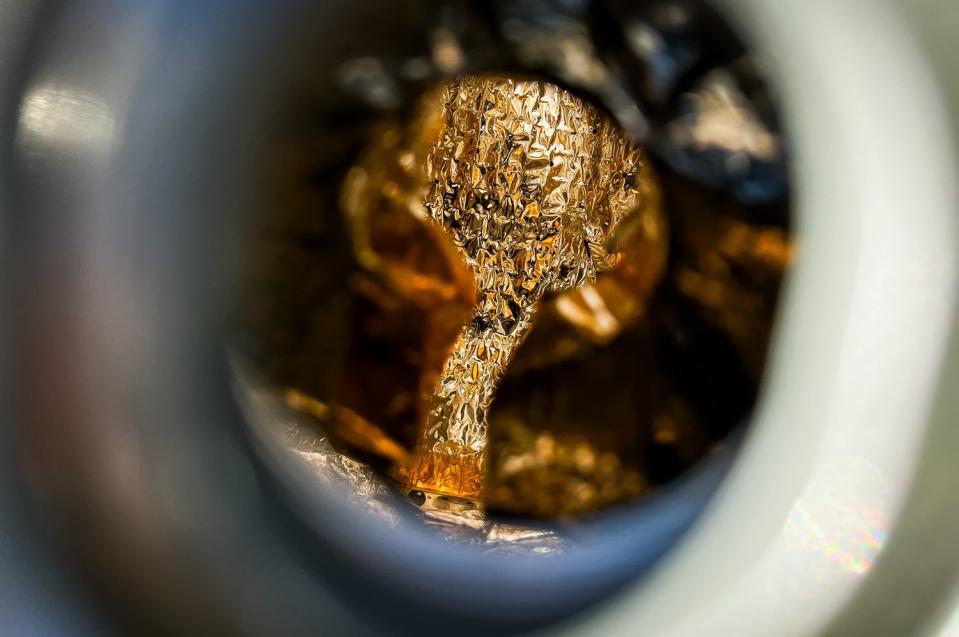
Significance
Lauretta said analyzing the sample will help scientists not only understand the origin of life in the universe, but hopefully also how common it is for life to form throughout the galaxy.
It will also help them prepare for the future, including "understanding our cosmic neighborhood and understanding any potential threats from outer space that we might need to deal with in the future," Lauretta said.
"This is the most dangerous rock in the solar system," Lauretta said of Bennu. The asteroid, around 500 meters in diameter, is the most likely of any asteroid to hit Earth. But it likely won't do it until the late 22nd century, if it hits Earth at all.
"Likelihood is low, consequences are high — we have to do something to understand it," he said.
Kimberly Allums, OSIRIS-REx curation project lead, said the sample could possibly contain unique minerals for scientists to learn from.
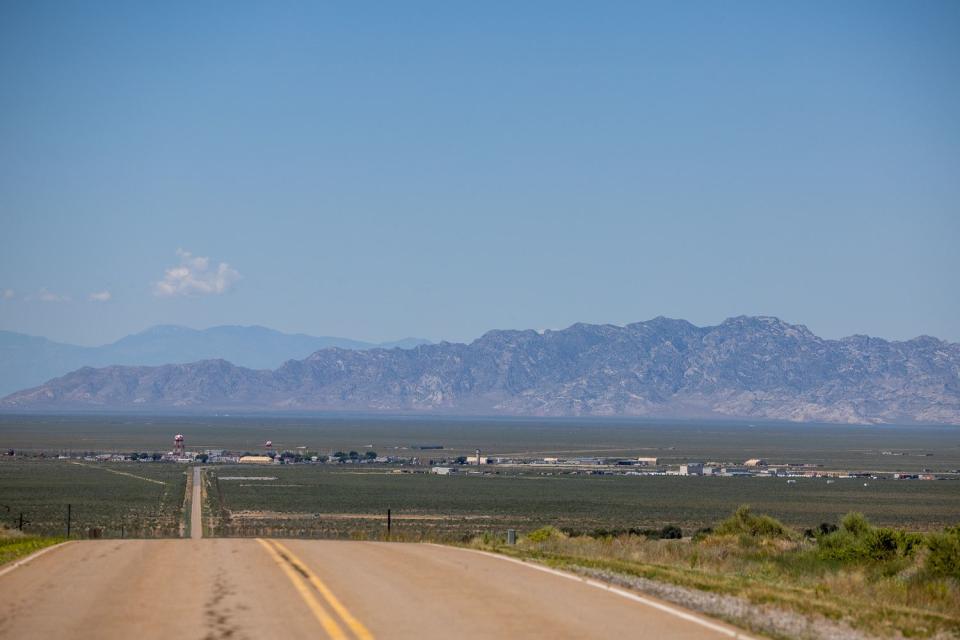
Why Utah?
This isn't the first time the Utah Test and Training Range has been used as a landing site. NASA's Stardust and Genesis missions both brought pieces of comets back to the Utah desert.
Scott Dixon, public affairs specialist at Dugway, said the proving ground was founded in 1942 in response to the need for higher defense shown by the attack on Pearl Harbor on Dec. 7, 1941. It's about the same square mileage as Rhode Island, and far from populated areas, making it the perfect place to test biochemical weapons to improve the nation's defense — but also making it the perfect place to land space equipment.
"Utah's becoming the place to drop capsules from outer space in the United States," Lauretta said.
Mike Moreau, OSIRIS-REx deputy project manager, added that this is just another example of the United States government using its resources to best serve its country.
"This is huge for Utah," said Lindsay Carl, the Utah Test and Training Range range control officer.
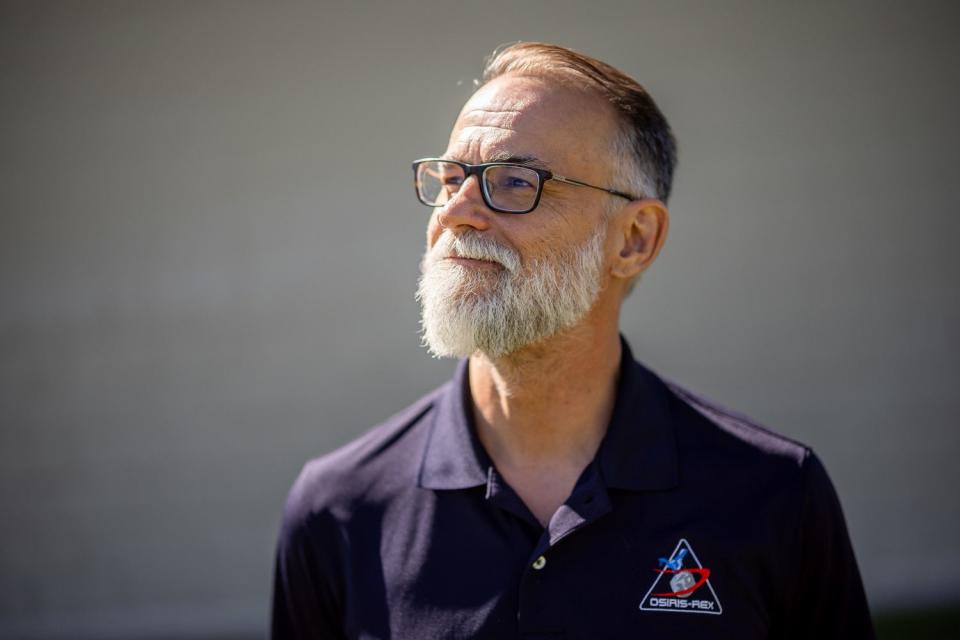
What's next?
The aircraft used for OSIRIS-REx isn't done yet. It will drop off its capsule Sept. 24 without landing, then embark on mission OSIRIS-APEX to explore the asteroid Apophis.
The OSIRIS-REx mission also marks a unique turning point for NASA, as it entails many firsts for the agency, Lauretta said. Along with collecting the United States' first asteroid sample, this mission has included a new level of contamination control and better documentation of samples that he said will "become the agency standard moving forward."
Lauretta said the contamination protocol and biosphere interaction policies learned from OSIRIS-Rex will be influential in an upcoming sample mission to Mars.
"Sample return is kind of the way we're going to explore the solar system in the future, and a lot of what we've done on OSIRIS-REx is going to be a pathfinder for future missions," Lauretta said.
